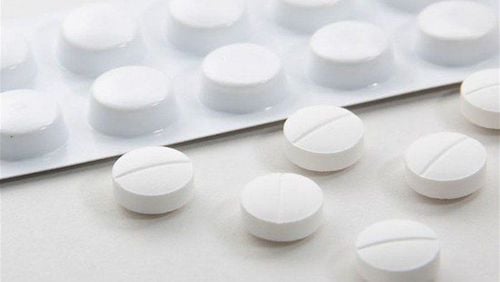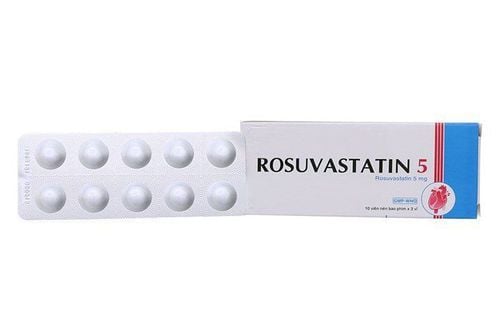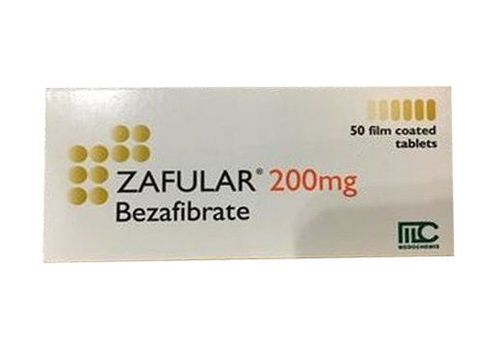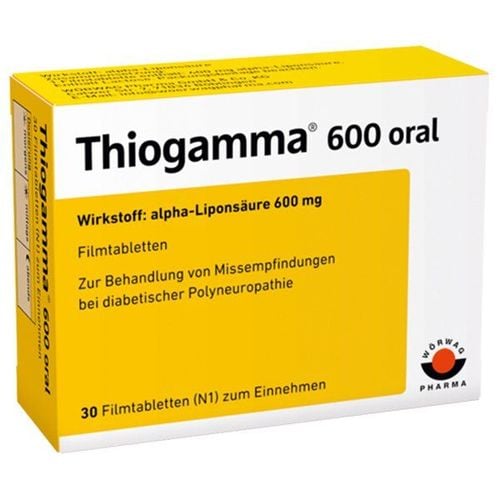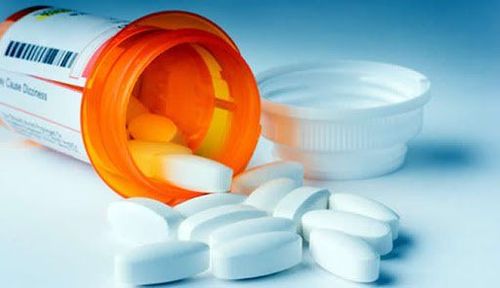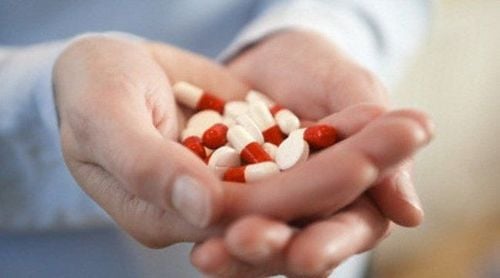This is an automatically translated article.
The article was written by Specialist II Doctor Nguyen Xuan Thang - Department of Medical Examination & Internal Medicine - Vinmec Central Park International General HospitalDiabetes mellitus (DM) is considered the leading cause of end-stage renal disease requiring renal replacement therapy. Diabetic nephropathy, also known as diabetic nephropathy, belongs to the group of small-vessel complications of diabetes, is one of the leading causes of chronic kidney disease and end-stage renal failure in the world.
Over time, poorly controlled diabetes can damage the clusters of blood vessels in the kidneys. This can lead to kidney damage and cause high blood pressure. High blood pressure can cause further kidney damage by increasing the glomerular filtration rate.
Diabetic nephropathy often appears insidious, gradual and insidious and is often accompanied by other small vessel complications such as peripheral neuropathy, diabetic retinopathy. Diabetic nephropathy is also a cardiovascular risk factor. Both chronic kidney disease and diabetes increase the risk of premature death, cardiovascular disease, and end-stage renal disease.
Intervention in the early stages of diabetic kidney disease is essential to prevent progression and slow down the progression of the disease. Good glycemic control and good treatment of risk factors: hyperlipidemia, blood pressure control, lifestyle changes using drugs that inhibit the renin-angiotensin system have been shown to reduce renal complications, as well as cardiovascular complications, long-term mortality reduction for patients with type 1 and type 2 diabetes. The treatment of diabetic kidney disease now has many new drugs to choose from and has been proven to be effective.
Chronic kidney disease in patients with diabetes may not be a complication of diabetes. Kidney function can be impaired due to other causes: Loss of body fluids, contrast agents, anti-inflammatory drugs, co-morbidities...
To evaluate the decline in kidney function, it is necessary to periodically check the level of kidney function. glomerular filtration rate and urinary albumin/creatinine ratio (ACR).
1. Epidemiology
Approximately 30-40% of patients with diabetes have chronic kidney disease.
About 40% of patients with end-stage CKD are caused by diabetic nephropathy.
The world has 1.7 billion people with diabetic kidney disease, and this rate is expected to double by 2030.

2. Concepts
Chronic kidney disease: Kidney damage with or without decreased glomerular filtration rate lasting more than 3 months. Diabetic kidney disease: Diabetic kidney disease, with the presence of albumin in the urine Diabetic patients have chronic kidney disease, diagnosed with DKD when: + Macroal or microalbuminuria with diabetic retinopathy
Urine Microalbuminuria: 30 - 300 mg/24 hours
Minor albumin: More than 300 mg/24 hours
+ Microalbuminuria in type 1 diabetes diagnosed over 10 years
+ Exclude other kidney or urinary tract diseases on patients with diabetes
Table 1: Grading of kidney damage based on urinary albumin/creatinine ratio (ACR)
| Phân độ | ACR (mg/mmol) |
| Không có tổn thương | < 3 |
| Đạm niệu vi lượng (Microalbumin) | 3 - 30 |
| Đạm niệu đại lượng (Macroalbumin) | > 30 |
| Giai đoạn | Đặc điểm | ĐLCT ước tính (mL/phút/1,73m2) |
| 1 | Bệnh ĐTĐ với ĐLCT BT hoặc tăng cùng với tiểu albumin trường diễn | ≥ 90 |
| 2 | Bệnh ĐTĐ với ĐLCT giảm nhẹ cùng với tiểu albumin trường diễn | 60-89 |
| 3a | Giảm ĐLCT nhẹ đến trung bình | 45-59 |
| 3b | Giảm ĐLCT trung bình đến trầm trọng | 30-44 |
| 4 | Giảm ĐLCT trầm trọng | 15-29 |
| 5 | Suy chức năng thận | <15 (hay lọc thận) |
3. Progression of diabetic kidney disease
Frequent microalbuminuria 30 - 300 mg/24 hours, then macroalbuminuria (Over 300 mg/24 hours). At this stage, there is usually already an increase in blood pressure. Then decreased glomerular filtration rate and increased blood creatinine, progressing to end-stage chronic kidney disease.
4. Risk factors
Unmodifiable risk factors include genetic predisposition, race, and age.Modifiable risk factors include blood sugar, blood pressure, cholesterol, weight, smoking, and other kidney disease risk factors.
5 . Clinical symptoms
In the early stages of diabetic kidney disease, you may not notice any signs or symptoms. In the later stages, signs and symptoms include:Fatigue, feeling short of breath, loss of appetite, nausea and vomiting, itching Hypertension Fluctuating blood sugar Swollen feet, ankles, hands or eyes, urinating less Confusion or difficulty concentrating

6. Subclinical
Albumin, protein in urine. Serum creatinine may be normal or elevated. Approximately 20-25% of people with diabetes have an increased glomerular filtration rate (>120/ml/min) in the early stages of the disease, which triples the likelihood of developing diabetic nephropathy. Renal ultrasound to rule out other kidney diseases such as polycystic kidney disease, kidney stones... Renal biopsy: not performed to diagnose diabetic nephropathy if the patient has a typical progression. Biopsy may be necessary in cases of suspected kidney disease such as rapidly progressive glomerulonephritis, amyloidosis...
7. Distinguishing non-diabetic kidney diseases in cases
Mass proteinuria at diagnosis of diabetes less than 5 years (especially in patients with type 1 diabetes) Proteinuria or rapidly progressive nephrotic syndrome Treatment-resistant hypertension Symptoms or signs of other systemic disease Presence of urinary sediments or isolated hematuria Decrease in glomerular filtration rate by more than 30% within 2-3 months of initiation of ACE inhibitors or receptor blockers Low or rapidly decreasing glomerular filtration rate None comorbid retinopathy
8. Treatment
Treatment goals for patients with diabetic kidney disease:HbA1c
7% Blood pressure < 130/80 mmHg Blood cholesterol control: LDL < 100mg/dL (2.6mmol/L) if no cardiovascular events Control sugar In addition to the pre-existing basic classes of drugs, a number of hypoglycemic drugs developed in recent years have provided cardiovascular and renal benefits in addition to the goal of glycemic control.
According to the recommendation of the International Society of Nephrology (KDIGO 2020) (Kidney Disease Improving Global Outcomes - Clinical Practice Guideline on Diabetes Management in Chronic Kidney Disease), priority should be given to choosing the SGLT-2i (Sodium Glucose Co Transporter 2 inhibitor) group for patients with diabetes. type 2 diabetic kidney disease with a glomerular filtration rate (GFR) above 30 ml/min/1.73 m2 because besides effective blood sugar control, it also helps to reduce albuminuria and slow progression of chronic kidney disease, reducing cardiac events. Cardiovascular for patients with type 2 diabetes.
According to the American Diabetes Association (ADA - The American Diabetes Association) 2020, diabetic patients with chronic kidney disease with an estimated glomerular filtration rate of 30 - 60 ml/min/1.73 m2 have urine Microalbumin, especially macroalbumin, the first choice for hypoglycemia is also the SGLT-2i group because it has been shown to have benefits on the kidney and heart.
The first step in treating diabetic kidney disease is to treat and control your diabetes and, if needed, high blood pressure (hypertension). With good management of blood sugar and hypertension, you can prevent or delay kidney dysfunction and other complications.
Controlling high blood pressure Medicines called angiotensin-converting enzyme (ACE) inhibitors and angiotensin II receptor blockers (ARBs) are used to treat high blood pressure.
Lowering blood cholesterol Statins are the preferred group to use to treat cholesterol. Recent evidence suggests that lowering cholesterol should be taken more seriously. In addition to LDLc being strongly associated with the formation of atherosclerotic plaques, a decrease in HDLc levels and an increase in triglycerides should also be considered. Dyslipidemia in patients with type 2 diabetes is associated with insulin resistance. Depending on blood lipid profile and existing complications, patients with diabetes will be selected for adjustment drug groups.
End-stage chronic kidney disease Renal dialysis is the most commonly used kidney replacement therapy for diabetics with end-stage renal disease
Kidney transplantation Expensive surgery and drugs used after transplantation.

9. Prevention and long-term management
To reduce the risk of developing diabetic nephropathy:
Control blood sugar Control blood pressure Control blood lipids Monitor disease according to guidelines and test periodically, especially kidney function including glomerular filtration rate , albuminuria . Patients with diabetes and chronic kidney disease stage 1-2 should be monitored renal function every 6 months. Patients with diabetes and chronic kidney disease stage 3-5 should have their kidney function monitored every three months. Diabetes and chronic kidney disease stage 1-2: can be reversed with tight control of blood glucose, control of blood pressure, use of drugs that inhibit the renin angiotensin system, especially in type 1 diabetes. chronic kidney disease stage 3-4: slow disease progression by means of treatment mentioned above, avoid drugs that cause nephrotoxicity.
Early detection and treatment of diabetes, especially those with a family history of diabetes
Timely treatment of other complications of diabetes such as diabetic retinopathy, diabetic feet, cardiovascular disease.
Avoid nephrotoxic drugs, such as non-steroidal anti-inflammatory drugs, aminoglycoside antibiotics.
Lifestyle changes. Maintain a healthy weight.
Avoid tobacco.
10. Nutrition
Reduction of dietary protein intake below normal is not recommended because it does not alter blood glucose, cardiovascular risk, or progression of decreased glomerular filtration rate.
A protein-restricted diet may be considered, especially for patients whose kidney disease tends to continue to progress despite optimal glycemic and blood pressure control and ACE inhibitors or or receptor blockers.
Total calories for the day vary depending on the condition of each patient. When kidney disease has progressed, patients need to reduce protein in the diet: About 0.8 -1g/kg body weight/day. It is also necessary to limit the amount of salt in the diet, about 5-6 grams / day. As kidney disease progresses, it is also necessary to limit phosphorus with phosphate binders and limit potassium.

In diabetic patients with chronic kidney disease: Stricter targets for blood glucose, blood pressure, proteinuria control. It is necessary to monitor albuminuria, screen and diagnose diabetic nephropathy early, and treat early to slow the progression of diabetic nephropathy.
Late stage (stage 5), where acute renal failure should be avoided, eg contrast-enhanced coronary angiography, or, maintenance therapy pending dialysis or kidney transplant.
Promptly treat other complications of diabetes such as diabetic retinopathy, diabetic foot, cardiovascular disease.
In all stages, it is necessary to pay attention to treatable comorbidities such as urinary tract infection, urinary retention, benign prostatic tumor...
Diabetic kidney disease is one of the very important complications because Not only has the potential to cause disability and death, but it also greatly affects the occurrence and progression of other chronic complications such as hypertension, macrovascular disease, diabetic retinopathy. Diabetic kidney: Strict control of blood sugar, blood pressure, albuminuria. It is necessary to screen for early detection of complications, especially diabetic nephropathy as soon as diabetes is detected, to monitor albuminuria. Early diagnosis of diabetic nephropathy and early management will slow the progression of diabetic nephropathy.
At Vinmec International General Hospital, we always deploy a screening package for diabetes and dyslipidemia to help detect pre-diabetes early, accurately classify diabetes type, develop a nutritional regimen, monitoring to minimize the risk and complications caused by diabetes.
Please dial HOTLINE for more information or register for an appointment HERE. Download MyVinmec app to make appointments faster and to manage your bookings easily.
The article references the source:American Diabetes Association; Nephropathy in Diabetes; Diabetes Care. 2020 Kidney Disease Improving Global Outcomes KDIGO 2020 (Clinical Practice Guideline on Diabetes Management in Chronic Kidney) Ministry of Health. Guidelines and clinical procedures for the diagnosis and treatment of type 2 diabetes. 2017.





